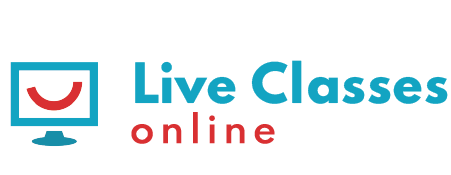Positives and Negatives of Online Classes
Learning is a lifelong process and the key to success in nearly all areas of life. Whether you are a preschooler, a college student, or an adult learner, learning new skills and acquiring knowledge can help you advance personally, academically, and professionally.
In recent years, online learning has shown significant growth globally. Billions of children and adults worldwide have pursued knowledge and skills online, particularly since the 2020 outbreak of coronavirus. Some sites such Udemy and YouTube provide countless recorded lessons on just about any subject; there are also gamification apps such as Duolingo that make learning fun.
The one thing that these are missing is the opportunity to interact with a teacher; live online classes have been growing in popularity to fill this niche. However, like everything else, online learning has its strong points and drawbacks. Here are the main positives and negatives of live online classes to help you decide if virtual learning is an option for you.

Pro: Live Online Classes are Convenient and Accessible
The most significant advantage of live online courses is their accessibility. If you have internet access, you can attend your live online class from anywhere. Live online instruction can unlock a whole new world of learning possibilities. With live online classes, students have a wider range of training opportunities available to them. For students who have other obligations in their life like work, family, or travel, being able to access classes online is essential. While attending an in-person classroom is simply not an option for many students, live online classes change that allowing these students to continue their education. Live online courses also allow learners to learn from skilled instructors from around the world who are experts in their fields.
So whether you live in a remote part of the countryside, or a highly populated city like New York City, you’ll have the same opportunities for great teachers and great classes.

Con: Cost
Although Live Online courses are in theory accessible to everyone in reality they are not. The classes, although rather inexpensive, have a fee which may not be affordable to some students. The student also needs a laptop or computer that can handle zoom as well as any software the class may require. A high speed internet connection, and webcam are also required which may make these types of classes inaccessible for those who need them most.
Hopefully in the future, scholarships will be available for online classes as well as some government funding for laptops and internet.
Pro: Comfort

There’s little that can beat the comfort options of online learning. Rather than having to sit at an uncomfortable cheap desk in a classroom, online students have complete freedom. Whether it be sitting at a computer desk with an ergonomic chair, in a beanbag chair, or relaxing on the couch, students can find a place to sit that’s comfortable for them and makes it easier to focus. Even the dress code makes it far more comfortable – students in classrooms are expected to arrive at class with a certain level of professional dress. With online classes, there’s nothing stopping a student from learning in their pajama pants and favorite comfortable shirt.
Con: Comfort
While being comfortable and wearing comfortable clothes like pajamas can certainly benefit some learners, it may be a disadvantage for others. If you are home wearing pajama bottoms you may not take the class seriously, instead you may look at your cell phone ,eat or drink during class, take repeated breaks or even be disrespectful. In August 2020 one Illinois school district banned pajamas during online classes; they also said students should also be “sitting up out of bed preferably at a desk or table” during remote learning… According to one board member, students would be more focused if they are dressed and sitting to mirror typical classroom expectation.
Pro: Online Courses Provide Individualization
Online classes offer more individual attention in the learning process as they bring education right to your home.
Direct contact with your online instructor allows them to tailor the teaching materials to your needs and interests. Such an approach provides individualization often unavailable in traditional education and face-to-face courses, enhancing your learning opportunities.

While this can be greatly beneficial to those students ahead of the pack in supplementing their education, live online learning has the opportunity to bridge a lot of accessibility gaps that are difficult to address in either in-person classroom learning or in asynchronous online learning. For students with disabilities, attending school can be a challenge. Whether it be an autistic student for whom a crowded classroom is too overwhelming to focus or a physically disabled student who has high needs for their physical accommodations, classrooms are rarely universally accessible. Asynchronous or independent online learning, however, also fails to be accessible for many. Students who struggle with learning disabilities, focus or attention issues, or who require extra assistance aren’t going to do well with independent or asynchronous learning because of its reliance on self-teaching and self-motivation. Live online classes offer a highly accessible option for disabled students.

Con: Online Classes Increase the Amount of Screen Time
Online courses can significantly increase the amount of your child’s (and your own) time in front of screens. Studies show that excessive screen time can lead to headaches, obesity, mood swings, irritability, anxiety, loneliness, and more.
However, the experts agree that the nature of our screen time matters. Namely, online courses and educational games can spark creativity and promote problem-solving skills.
We live surrounded by technology today. However, it is essential to teach your children the concepts of safe and creative technology use. This will help protect them and make the most of their screen time.
Pro:Live Online Classes Encourage Interaction

Live online classes allow other family or household members to get involved, encouraging interaction and support in your learning process. Moreover, online courses can help you meet people with similar interests from around the world.
Many people consider traditional learning in a physical setting the most natural way to interact with others. However, online courses can be an excellent opportunity for shy and reserved people to overcome barriers and meet people.

Con: Online Learners Encounter Technical Difficulties
In-person classroom teaching requires very little technological infrastructure. While digital aids might be used in most classrooms, all that’s really necessary is a room, pencils, and paper. However, with online learning, quite a bit can go wrong. The system relies upon a certain level of technological literacy on the part of the student. A student who’s not familiar with how to troubleshoot common problems with video calls or digital learning tools could struggle considerably. A problem coming up with a student’s home power, internet, or computer can cause them to miss their class or spend their studying time battling connections and webcams.
Pro: Virtual Courses are More Affordable for Adult learners

Online education provides cost-effective learning. With virtual live courses, you don’t have to worry about traveling to the learning institution, paying for the gas and parking, and eating outside. Also, many people opt for online classes to cut the childcare cost or spend more time at home with their kids.
For some, long working hours are an obstacle to traditional education. Suppose you cannot get a promotion at work because you cannot attend classes to upgrade your educational level. In that case, you may want to consider an education at home.
Con: Live Online Classes Require Good Time Management Skills

Studying from home requires strong self-discipline and good time management skills. These skills allow you to prevent time thieves, avoid procrastination, and increase your productivity.
Many children and adults struggle with their time management, losing a lot of time during the day on irrelevant things.
Virtual classes require that you develop strong time management skills, so you can manage your time, set priorities, and limit distractions.
With other family members, social media, and tempting TV series around, getting distracted when studying or working from home is easier than ever. So, online classes may cause a decreased sense of accountability. However, taking live online courses instead of just online courses provides a greater responsibility in the learning process.
Pro: Accountability

Procrastination can be described as a tendency to put off your tasks while focusing on less urgent but more enjoyable things to do or to think about. And procrastination can become a considerable challenge when studying from home as online courses involve active, student-centered learning.
However, just like with in person classes live online classes have teachers that hold you accountable for attendance and class assignments. Ultimately, your success depends on you, but it always helps to have a teacher to help hold you accountable.
There are many things to consider when choosing the type of education that is right for you. Are you someone who needs the structure of a classroom? Do you do best in the comfort of your own home? Do you like the in person interaction you get in a physical classroom? Do you have time restrictions that would work best with online classes? Take some time to decide which type of learning environment suits you best; perhaps it’s online, or in person or maybe even a combination of both.


